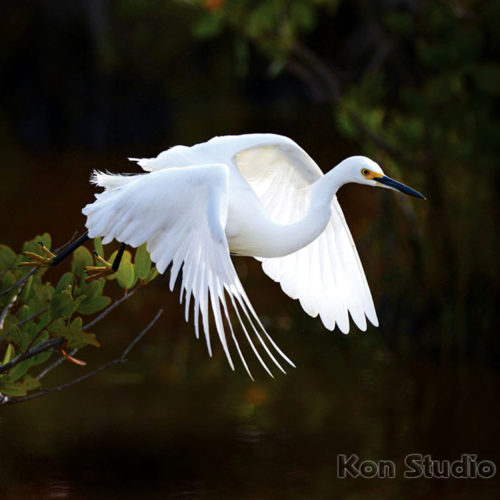The Snowy Egret, Egretta thula, is a medium-sized heron that is smaller than a Great Egret. They have a black bill, a patch of yellow skin on their face, and vibrant yellow feet. They are year-round residents in Florida.
Look for Snowy Egrets near the coast, in wetlands, along rivers and lakes, and in agricultural fields that are wet. Their diet consists of fish, insects, crustaceans, frogs, and worms. They often use their yellow feet to stir up mud to make food accessible. You may find them eating while paddling, walking, running, or standing. They often forage in groups with other species including herons, egrets, ibises, and Roseate Spoonbills.
During the breeding season, Snowy Egrets grow long billowy plumes on their backs and heads. Their feet become a bright yellowish-orange and the skin on their face becomes reddish in color. Male Snowy egrets provide quite a display of courtship that includes loud noises and incredible aerial displays. They will fight to defend their breeding territory.
Nesting occurs at the top of a tree or a shrub at a site chosen by the male. They often nest in colonies with other egrets, herons, Roseate Spoonbills, and ibises. The male builds the foundation of the nest and then supplies materials such as sticks, grasses, and Spanish moss so the female can make it comfortable. The female lays 2-6 eggs that hatch in 24–25 days. They take turns incubating the eggs and both care for the hatchlings for 20-24 days. The pair will defend their young who may be preyed upon by owls, alligators, and crows.
Before plume hunting of Snowy Egrets was stopped in 1910, the population of this beautiful bird was severely compromised. Today the population is stable. However, the massive destruction and degradation of wetlands that have occurred in the last 200+ years put them at risk for food insecurity. For the sake of Snowy Egrets and all wading birds, we must advocate for the preservation and restoration of wetlands and the food sources that lie within them.

